Dried pasta, which cooks in roughly 10-12 minutes, depending on its shape and your taste, isn’t always the first thing I reach for when time is of the essence, but this Roman classic is so wonderfully simple, both in terms of ingredients and preparation, that it takes some beating. And if you think it’s quick to make, wait until you see how fast it disappears.
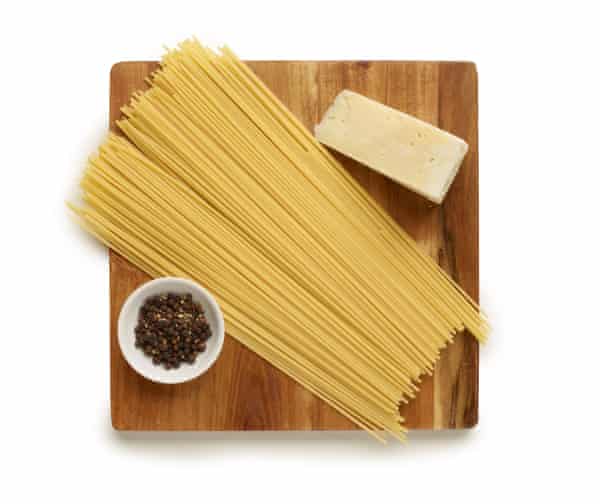
Prep 5 min
Cook 10 min
Serves 2
2 tsp black peppercorns (see step 2)
Salt
200g spaghetti (see step 4)
80g pecorino romano, at room temperature (see step 6)
1 Warm the bowls
This is one recipe where I’d go further than strongly recommending you read it through before starting; I absolutely demand it. It all comes together very quickly at the end, and any hesitation will make things a lot harder. Once you’ve done this, put two serving plates or bowls into a low oven to warm up (or fill them with hot water).
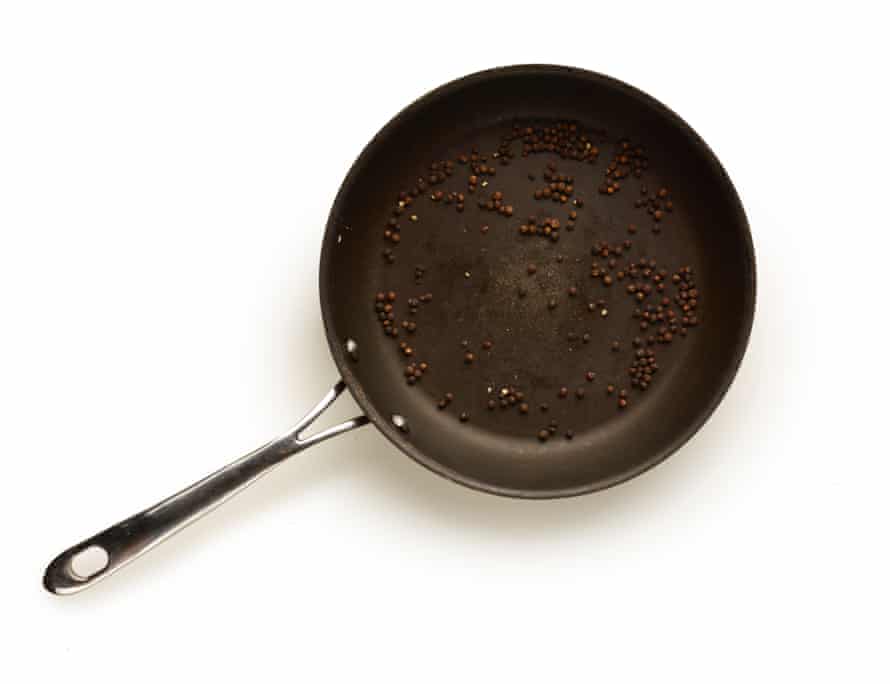
2 Toast the peppercorns
As the dish’s name suggests, pepper is a key flavouring here, so although you could just use your everyday pepper grinder, I think it’s worth warming up the peppercorns first, so they pack as much punch as possible. Toast the peppercorns in a hot, dry pan and, once they start to smell fragrant, tip out into a mortar and roughly crush.
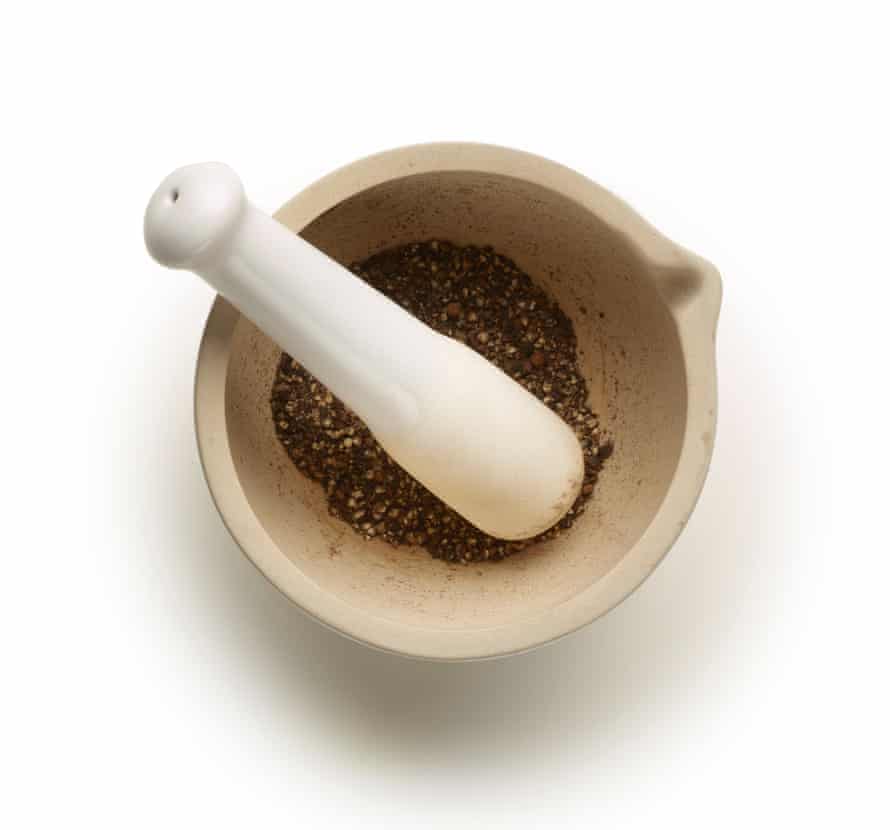
3 A note on the pasta pot
You can cook the pasta in the standard large pan of boiling salted water, if you like, but it’s helpful to concentrate the starch as much as possible to help this sauce emulsify, so I prefer to cook it in a much smaller volume of water, which generally means using a wide pan to fit the strands in widthways.
4 A note on the pasta
Bring this pan full of lightly salted water to a boil, then add the pasta – spaghetti is what I generally use, but stubby pici or square tonnarelli are also popular choices in cacio e pepe’s homeland. Of course, in reality, you can use whatever you happen to have in (though, as with carbonara, I think long strands make for more satisfying slurping).
5 Cook the pasta
The pasta should be just covered with water, but not by much, so scoop out and discard any excess. Stir the pasta occasionally, to ensure it cooks evenly and, after about five minutes, scoop out about 250ml of the water and set aside to cool slightly while you finely grate the cheese (see below) to make the sauce.
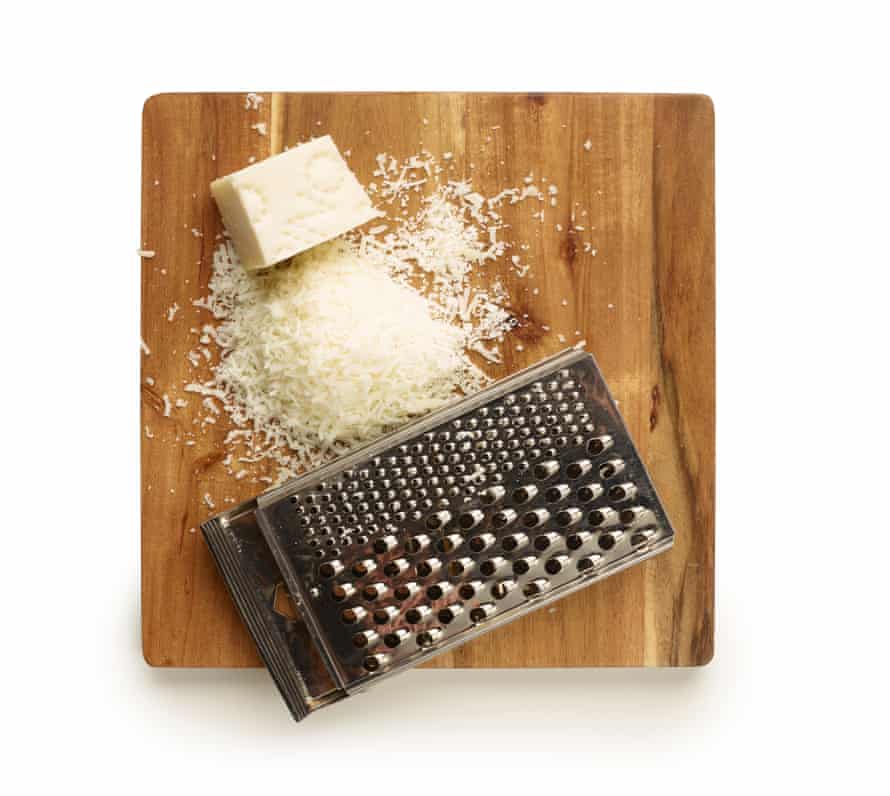
6 A note on the cheese
Sharp, salty pecorino romano (not to be confused with the milder pecorino sardo or toscano) is the cheese to go for here, though you could use parmesan or most hard cheeses if you haven’t got pecorino romano. If the rennet in pecorino is a problem, and you don’t care for vegetarian parmesan-style cheeses, try cheddar instead – there’s a recipe on Peta Leith’s website, should you need guidance.
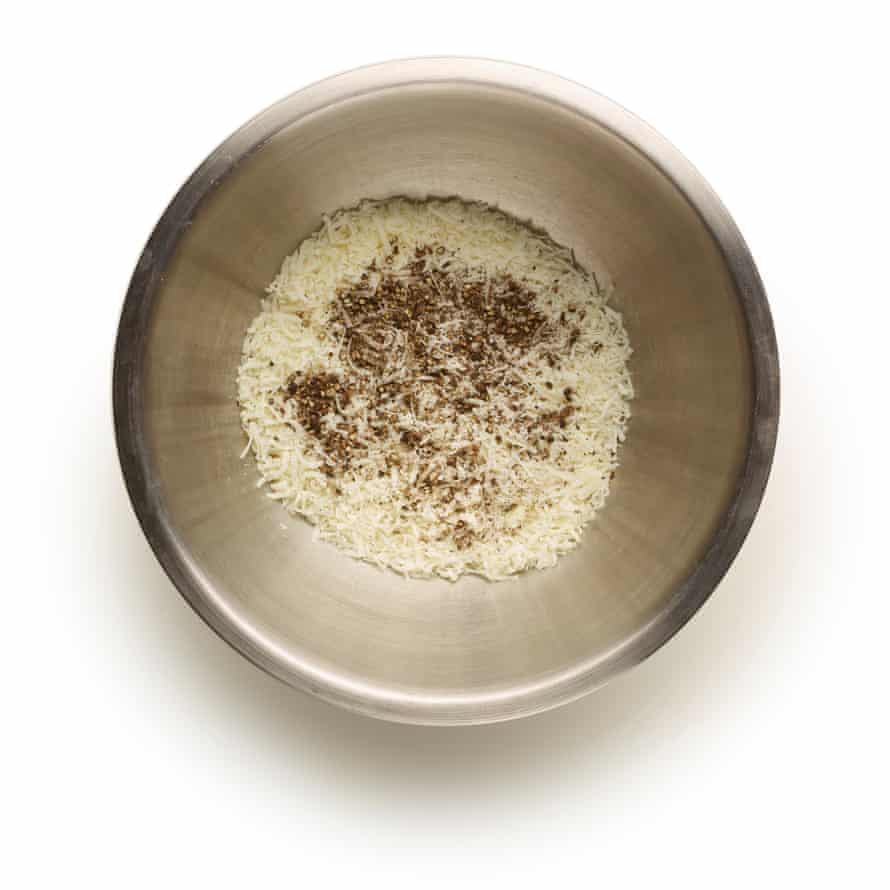
7 Start on the sauce
Put the grated cheese and most of the pepper into a large, heavy bowl, and anchor it to the work surface with a damp tea towel, if it threatens to slip. Once the pasta is done to your liking (bear in mind that you won’t be cooking it any further after this), drain it well and leave it to cool for a minute while you start the sauce.
8 Add the pasta to the sauce, and toss
Very gradually beat a little of the pasta water into the grated cheese mix to turn it into a paste, then add a little more until you have a sauce the consistency of a bechamel.
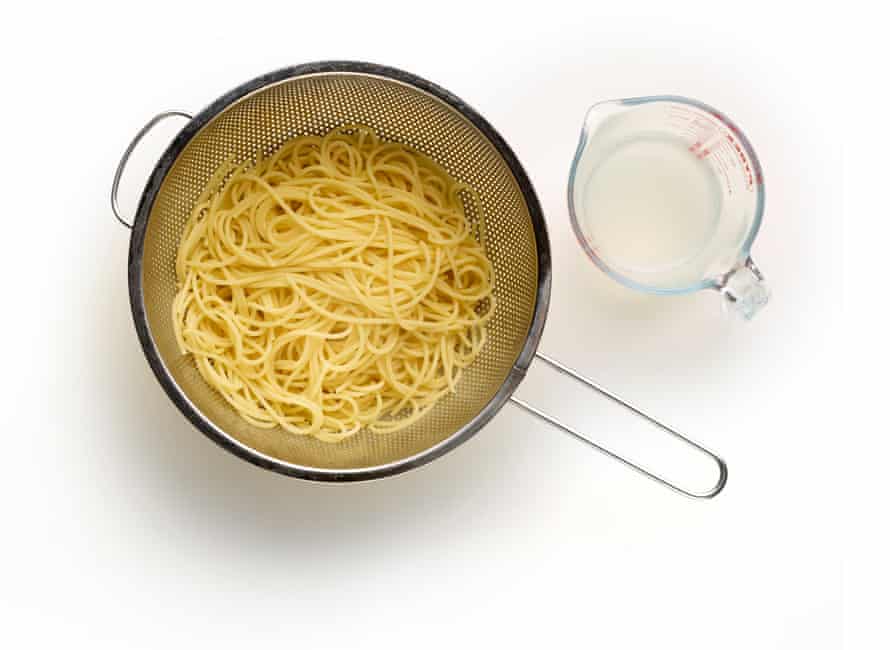
Add the pasta to the bowl and toss furiously (tongs are very useful here) while also adding enough of the remaining water to make a sauce that coats the pasta – you shouldn’t need all the water.
9 Finish, and tuck in
Don’t worry if the sauce and pasta take a while to come together; keep beating and it will almost certainly happen. Divide the pasta between your warmed bowls, sprinkle over the remaining crushed pepper, and devour immediately, before the sauce has a chance to cool and solidify (if it does, it’s delicious in a frittata).
The Link LonkApril 21, 2021 at 06:00PM
https://ift.tt/3v7Ac8e
How to make pasta cacio e pepe – recipe - The Guardian
https://ift.tt/31oM9uv
Pasta
No comments:
Post a Comment